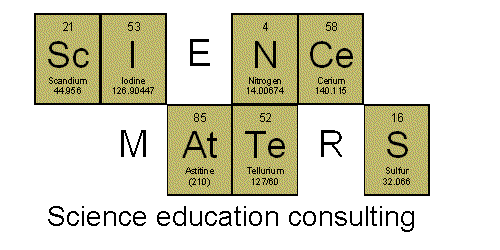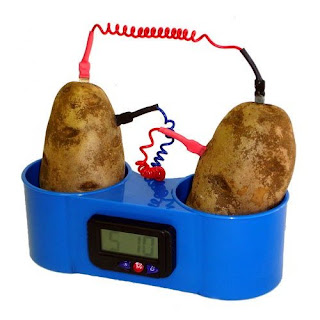This is an original demonstration I created to try to help my students understand Rutherford's experiment: what he expected to have happen, what actually happened, and why it was significant. The demonstration is a bit crude (and it's starting to fall apart) - there's certainly room for improvement, but I think it does help students visualize what was happening. Please let me know if you find a way to improve upon this demonstration - I would love to hear about it.
Prior to Rutherford's experiment, the going theory about the atom was Thomson's Plum Pudding model. In this model of the atom, negatively charged material is scattered throughout the atom.
In Rutherford's Gold Foil experiment, he set out to shoot a beam of atoms at a thin sheet of gold foil. Based on the Plum Pudding model, one would expect most of the atoms to bounce back because the "negative" material is scattered throughout the atom, not allowing much room for atoms to pass by.

Instead, most of the atoms went straight through the gold. The resulting conclusion was that gold atoms must be made mostly of empty space, with a large central nucleus.

To create my stunning visual aids, I collected:
*a couple dozen small (~1") styrofoam balls
*a styrofoam disk (~2" in diameter)
*2 empty cereal boxes (on the larger size)
*thread
*a very large needle (used for upholstery)
Box 1: Thomson's Plum Pudding Model-Cut open the sides of your cereal box, I left them on as flaps, to protect the model.
-Use the needle to sting the styrofoam balls onto the thread. (I used about 4 balls per thread and about 6 threads - adjust to the size of your box accordingly)
-Tape the ends of the threads to the top and bottom of the box.
Box 2: Rutherford's Model-Cut open the sides of your cereal box, I left them on as flaps, to protect the model.
-Use the needle to run the thread through the styrofoam disk. Instead of trying to poke the whole way through the diameter of the disk, I ran thread through two holes that were poked through the flat part of the disk (examine the above picture).
-Tape the ends of the threads to the top and bottom of the box.
To demonstrate:Rutherford thought he was shooting atoms at something resembling Thomson's model. Use an extra styrofoam ball and toss it at Box 1. The majority of the time, the ball should bounce back, because there isn't room for it to fit through. This is what Rutherford expected to have happen.
But... that's not what happened. Instead most of the time the atom (ball) passed through. Pull up Box 2 and toss the ball at it. This time, the ball should pass through a lot of the time. The only time it will bounce back is if it hits the nucleus.







































